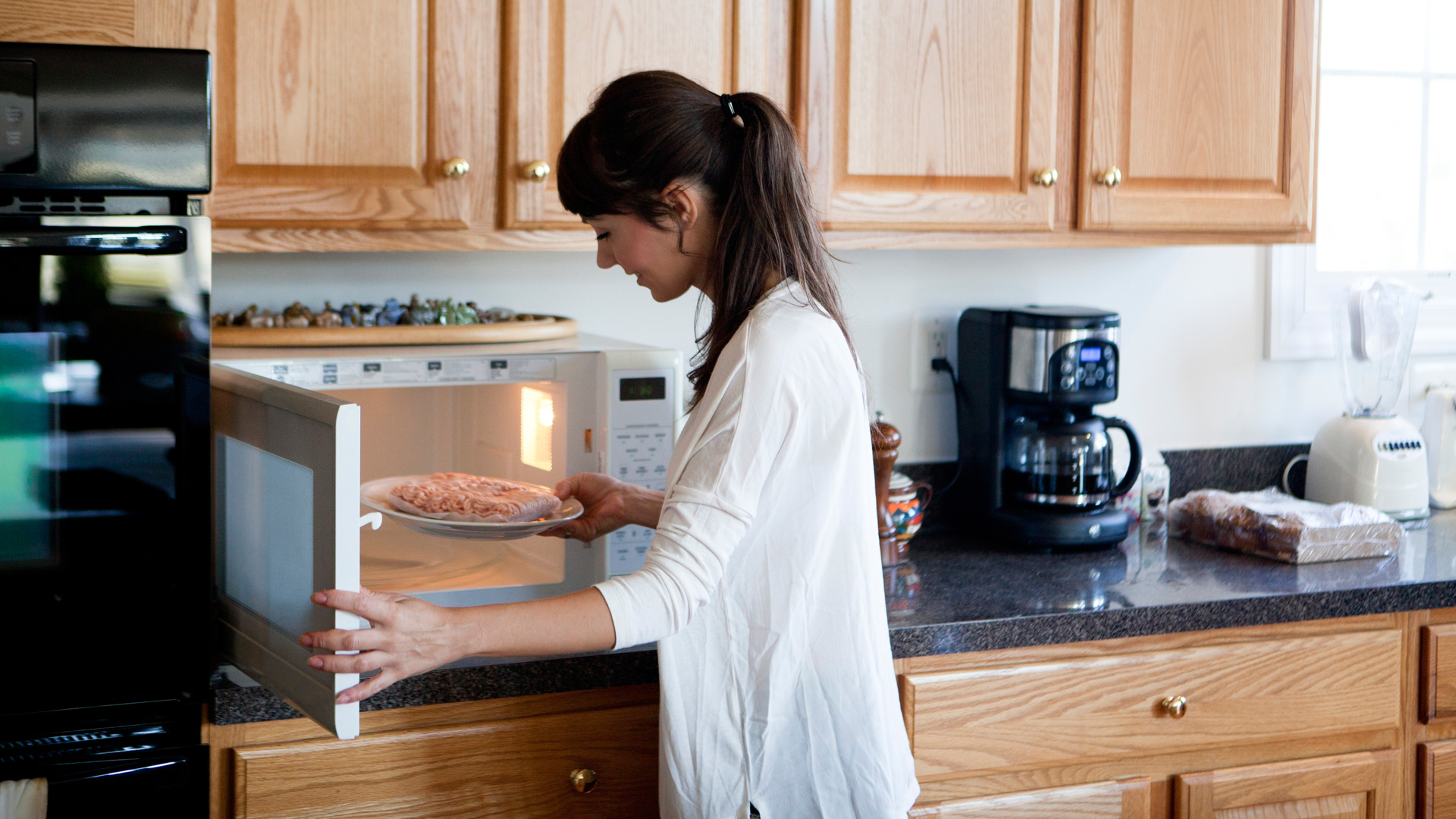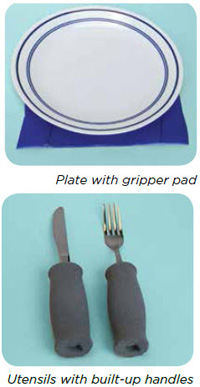Both physical and cognitive changes after stroke can pose problems in planning and preparing meals. For example, problems with a hand or arm can make it difficult to bring food and drink to your mouth. Cognitive changes may mean that you need to relearn how to do some kitchen routines safely.
An occupational therapist can help you find devices and strategies to manage meal times more independently.
Preparing meals
Planning
- Plan your meals a week ahead.
- Make a shopping list.
- Write down the steps needed to get a meal ready.
- Try to make double batches and freeze extras for another day.
- Set up a routine for preparing meals. Practice the routine often to help you remember the steps.
- Ask family and friends to get involved in meal preparation.
Safety in the kitchen
The kitchen can be an unsafe place. Safety awareness is important for someone with stroke.
- Always wear protective, heat-proof gloves when handling pots and pans. This is especially important if you have lost feeling in your hands or if you might forget that something is hot.
- Arrange your kitchen to make it easier for you to reach things. Move frequently used ingredients to lower shelves. Keep dishes and pots within easy reach.
- Put rubber mats or wet cloths under plates and cutting boards to prevent them from slipping during food preparation and meals.
- When possible, use a microwave oven or toaster oven instead of the stove or oven.

Conserving your energy
- Sit in a chair when working at the kitchen counter.
- Change the knobs on doors to handles that are easier to grasp.
- Use cooking utensils and cutlery that are specifically designed for people with stroke.

Eating and drinking
Assistive devices can help you if you have trouble coordinating your muscles while you eat and drink.
These devices include:
- plates with big rims to hold food in
- dishes with gripper pads on the bottom so they don’t slip
- modified utensils with built-up or bent handles
- one-handed cutting utensils
- cups with a cut-out or partial lid.

Dental health
Dentures, partial plates and other dental devices sometimes lose their fit after a stroke. Visit your dentist or denturist to have the devices assessed and altered as needed.
Good oral hygiene is especially important if you have swallowing problems (dysphagia). Clean your teeth after each meal.
Where to get support
Occupational therapists: can help you find devices to make cooking and eating easier. They can also help you organize your kitchen to help you cook and eat safely.
Dietitians can help you find healthy food choices that fit your situation.
If you cannot prepare meals on your own, here are some alternatives:
- community meal services such as Meals on Wheels
- grocery stores and private companies that sell complete, balanced, prepared, healthy meals
- grocery stores that deliver telephone or on-line orders
- healthy frozen meals. Read the labels to check for nutritional content. Make sure there are vegetables and protein. Some frozen packaged meals are high in sodium and fat and are less nutritious.
